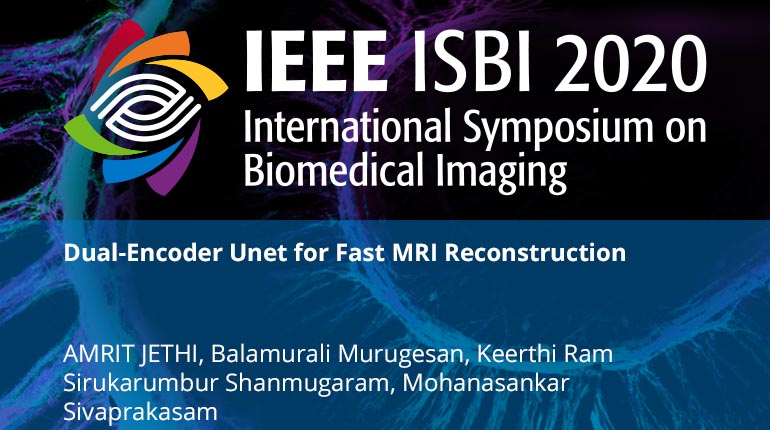
Already purchased this program?
Login to View
This video program is a part of the Premium package:
Dual-Encoder Unet for Fast MRI Reconstruction
- IEEE MemberUS $11.00
- Society MemberUS $0.00
- IEEE Student MemberUS $11.00
- Non-IEEE MemberUS $15.00
Dual-Encoder Unet for Fast MRI Reconstruction
The Automap method of MRI reconstruction provides an abstract way for direct mapping from undersampled k-space to image domain in two steps: domain transformation (DT) and image refinement (IR). The two steps have very different functions: The first step aims to learn the bases of a transform, and the second learns image recovery from the transformed sampled sensor data, subject to data consistency. We begin with the premise that representational sparsity and multiresolution nonlinearity are useful to permit sharp local discontinuities while globally optimizing IR, and consider the U-net architecture for IR. Additionally we consider the dAutomap method of reducing the transform computational complexity to O(N^3), a model of reduced representational power compared to the O(N^4) fully connected part of Automap, but which offers tractability to realistic k-space sizes and exact initializability.
The Automap method of MRI reconstruction provides an abstract way for direct mapping from undersampled k-space to image domain in two steps: domain transformation (DT) and image refinement (IR). The two steps have very different functions: The first step aims to learn the bases of a transform, and the second learns image recovery from the transformed sampled sensor data, subject to data consistency. We begin with the premise that representational sparsity and multiresolution nonlinearity are useful to permit sharp local discontinuities while globally optimizing IR, and consider the U-net architecture for IR. Additionally we consider the dAutomap method of reducing the transform computational complexity to O(N^3), a model of reduced representational power compared to the O(N^4) fully connected part of Automap, but which offers tractability to realistic k-space sizes and exact initializability.
 Cart
Cart Create Account
Create Account Sign In
Sign In





